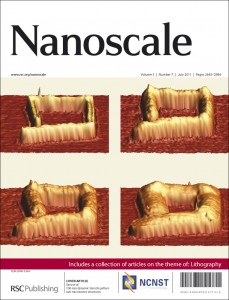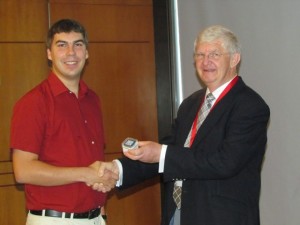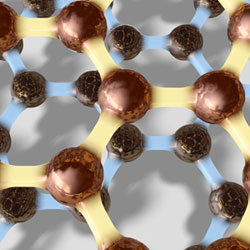This month sees the following articles in Nanoscale that are in the top ten most accessed:-
In situ self-assembly of mild chemical reduction graphene for three-dimensional architectures
Wufeng Chen and Lifeng Yan
Nanoscale, 2011, 3, 3132-3137
DOI:10.1039/c1nr10355e
Cu2ZnSnS4 nanocrystals and graphene quantum dots for photovoltaics
Jun Wang, Xukai Xin and Zhiqun Lin
Nanoscale, 2011, 3, 3040-3048
DOI:10.1039/c1nr10425j
Sized controlled synthesis, purification, and cell studies with silicon quantum dots
Amane Shiohara, Sujay Prabakar, Angelique Faramus, Chia-Yen Hsu, Ping-Shan Lai, Peter T. Northcote and Richard D. Tilley
Nanoscale, 2011, 3, 3364-3370
DOI:10.1039/c1nr10458f
Transparent and flexible electrodes and supercapacitors using polyaniline/single-walled carbon nanotube composite thin films
Jun Ge, Guanghui Cheng and Liwei Chen
Nanoscale, 2011, 3, 3084-3088
DOI:10.1039/c1nr10424a
Semiconductor nanostructure-based photovoltaic solar cells
Genqiang Zhang, Scott Finefrock, Daxin Liang, Gautam G. Yadav, Haoran Yang, Haiyu Fang and Yue Wu
Nanoscale, 2011, 3, 2430-2443
DOI:10.1039/c1nr10152h
PEG-templated mesoporous silica nanoparticles exclusively target cancer cells
Catia Morelli, Pamela Maris, Diego Sisci, Enrico Perrotta, Elvira Brunelli, Ida Perrotta, Maria Luisa Panno, Antonio Tagarelli, Carlo Versace, Maria Francesca Casula, Flaviano Testa, Sebastiano Andò, Janos B. Nagy and Luigi Pasqua
Nanoscale, 2011, 3, 3198-3207
DOI:10.1039/c1nr10253b
Graphene edges: a review of their fabrication and characterization
Xiaoting Jia, Jessica Campos-Delgado, Mauricio Terrones, Vincent Meunier and Mildred S. Dresselhaus
Nanoscale, 2011, 3, 86-95
DOI:10.1039/c0nr00600a
Seed-less amino-sugar mediated synthesis of gold nanostars
Waêl Moukarzel, Juliette Fitremann and Jean-Daniel Marty
Nanoscale, 2011, 3, 3285-3290
DOI:10.1039/c1nr10418g
Review on the progress in synthesis and application of magnetic carbon nanocomposites
Maiyong Zhu and Guowang Diao
Nanoscale, 2011, 3, 2748-2767
DOI:10.1039/c1nr10165j
Inorganic nanostructures grown on graphene layers
Won Il Park, Chul-Ho Lee, Jung Min Lee, Nam-Jung Kim and Gyu-Chul Yi
Nanoscale, 2011, 3, 3522-3533
DOI:10.1039/c1nr10370a
Why not take a look at the articles today and blog your thoughts and comments below.
Fancy submitting an article to Nanoscale? Then why not submit to us today or alternatively email us your suggestions.


















 Lifeng Yan and colleagues at the University of Science and Technology of China, Heifei, have prepared 3D graphene structures by self-assembly from graphene oxide using mild chemical reduction in water at 95 degrees Celsius at atmospheric pressure without stirring. The graphene shapes were controlled by using reactor vessels of differing shapes. The team were able to produce cylinder-, pear- and sphere-like shapes. ‘The process is quite simple – any macroscopic 3D graphene shapes can be prepared at room temperature and pressure,’ explains Yan.
Lifeng Yan and colleagues at the University of Science and Technology of China, Heifei, have prepared 3D graphene structures by self-assembly from graphene oxide using mild chemical reduction in water at 95 degrees Celsius at atmospheric pressure without stirring. The graphene shapes were controlled by using reactor vessels of differing shapes. The team were able to produce cylinder-, pear- and sphere-like shapes. ‘The process is quite simple – any macroscopic 3D graphene shapes can be prepared at room temperature and pressure,’ explains Yan.